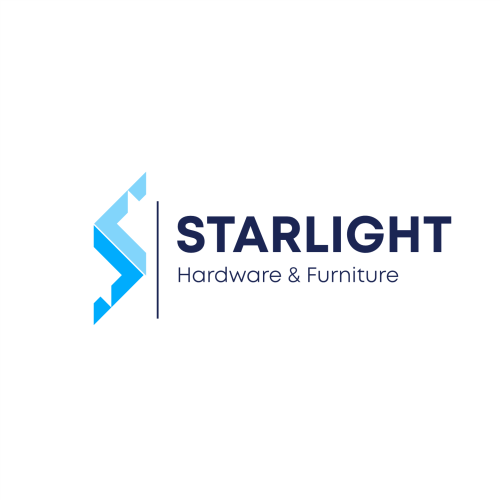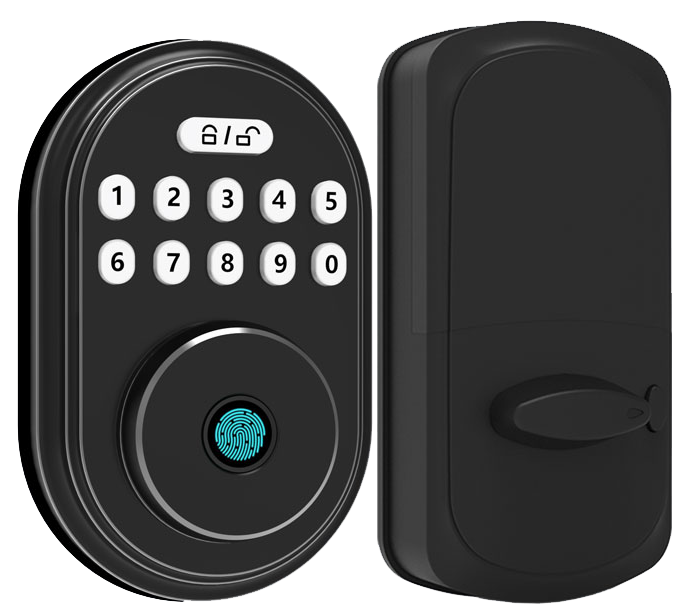Still juggling a tangle of heavy keys at dawn and dusk?
Ever had a tenant call you locked out in the pouring rain?
We get it.
It’s messy.
Our smart door locks swap those old-school keys for a simple PIN code (secret number input), a phone tap via Bluetooth (short-range wireless), or a seamless Wi-Fi (networked wireless) link.
It’s like trading a heavy toolbox for a sleek digital handshake.
You’ll see fewer lockout calls and get a clear audit trail (log of who came and went).
A crisp click, a soft LED glow.
Then you know your doors are secure.
And resetting access is just a few taps on your phone.
No more swapping cylinders or chasing down keys.
Smooth.
Ready for smoother operations and happier tenants?
Overview of Smart Door Locks for Property Management
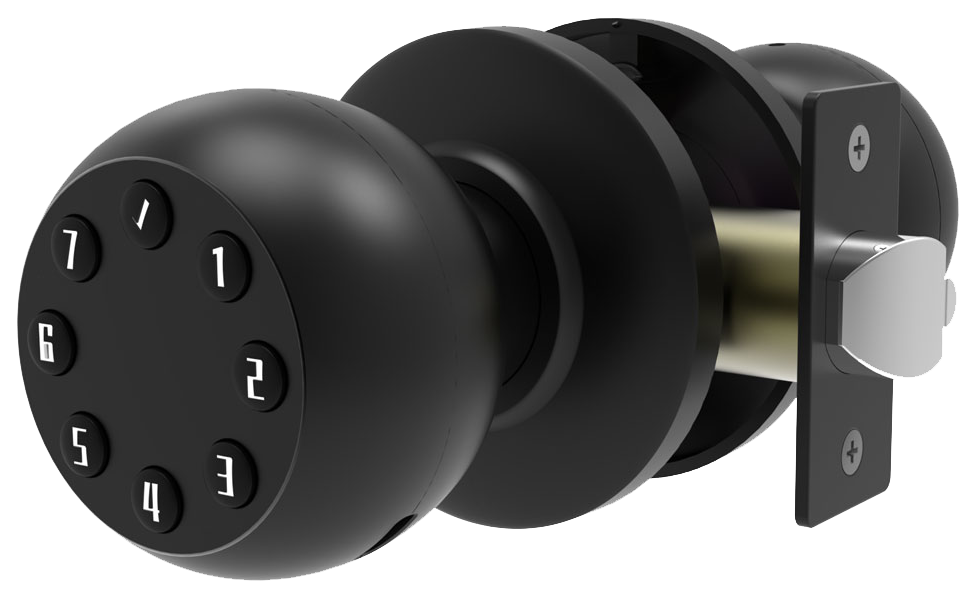
Tired of juggling rusty keys? Smart door locks trade bulky metal keys for electronic entry. You just punch in a PIN code (a secret number), tap your phone via Bluetooth (short-range wireless), or connect over Wi-Fi (networked wireless). And you get keyless entry that cuts late-night lockout calls.
These smart locks let you lock and unlock doors from anywhere with a mobile app. Tenants love the smooth metal faceplate and the soft LED glow that says “all set.” They tap a touchscreen keypad or open an app to come and go. You can even send temporary guest codes for cleaners or repair folks.
Um, every entry shows up in an audit trail (a log of who came and went). And if someone tries the wrong PIN too many times, a tamper alarm (security alert) kicks in and pings both tenant and manager. Solid peace of mind.
Durability matters. We use solid brass or stainless steel so locks shrug off rain, heat, or heavy use. You feel a reassuring click with each press. Exactly what you want on a busy property.
Installation is a breeze or a pro job, your pick. Adaptive locks retrofit existing deadbolts in minutes with a screwdriver. Full-replacement models fit thicker doors but need a pro’s tools and know-how. Either way, you’re set.
In 2022, the US burglary rate dipped to 269.8 cases per 100,000 people, thanks in part to smart locks. Property managers see fewer break-ins and fewer headaches over lost keys. Rekeying costs drop when you swap codes instead of swapping cylinders. Tenants get real peace of mind, and tech-savvy renters find these upgrades irresistible. Modern rentals stand out online, fill faster, and earn better reviews.
Communication Protocols in Property Management Smart Door Locks
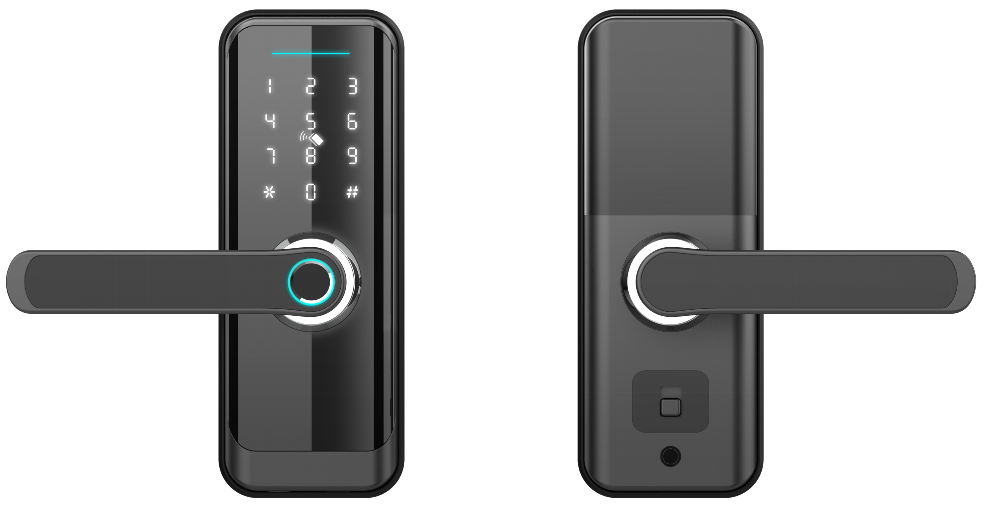
Z-Wave (a home automation wireless protocol) locks work with a hub (central controller) that connects to Wi-Fi, cellular, or Ethernet. The smooth metal faceplate draws very little power and keeps a steady link up to 30 feet. It also plays nice with other brands. Z-Wave is a smart pick for medium to large portfolios where one dashboard controls them all.
Bluetooth (short-range wireless tech) deadbolts pair directly with your phone from about six feet away. No hub needed. Setup is as simple as syncing wireless earbuds. It’s a quick install, and the cost stays low.
But you lose real remote access. If you want to lock doors from your office or check a tenant’s unit when you’re off site, Bluetooth alone won’t cut it.
Wi-Fi (wireless internet) smart locks join your network without any hub in sight. Tap your app from anywhere with an internet link, and you hear a reassuring click on your door. Perfect for a small complex or single building.
Batteries do run down faster though, like leaving a flashlight on high. And if your network is on an open channel, you risk strangers poking around.
| Protocol | Range | Power Usage | Hub Needed? | Remote Access |
|---|---|---|---|---|
| Z-Wave | Up to 30 ft | Low | Yes | Yes |
| Bluetooth | About 6 ft | Very low | No | No |
| Wi-Fi | Unlimited* | High | No | Yes |
*Unlimited range depends on your internet connection.
Choose Z-Wave when you have a big portfolio that needs smooth automation and centralized control. Opt for Bluetooth in single units where simple is best. Pick Wi-Fi when full remote control at every lock is your top priority.
Access Control Features in Smart Door Locks for Rental Properties
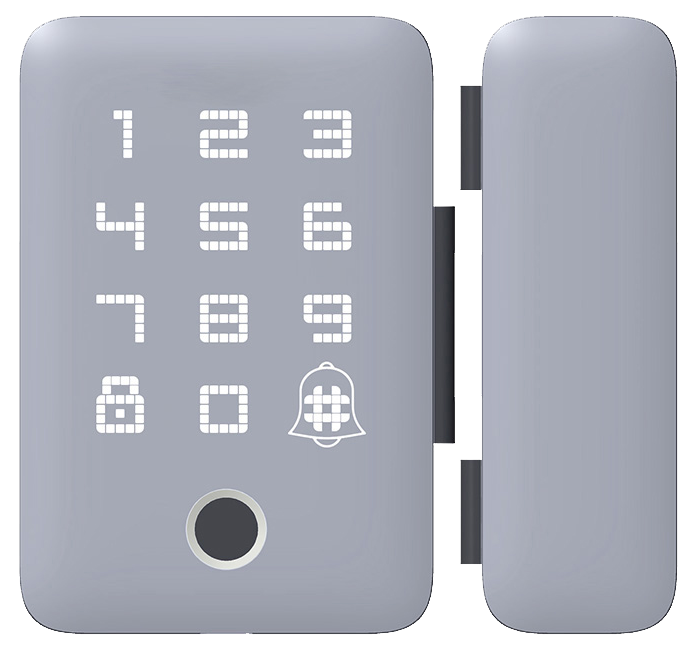
Gone are the days of just four-digit PINs. Modern electronic locks for rental homes offer multiple ways to get in, fast and secure.
- RFID cards: tap one against the smooth metal faceplate and the door clicks open.
- Fingerprint biometrics (a reader that checks your unique fingertip pattern): grants entry in under a second.
- Hybrid mechanical backups: enjoy a soft LED glow on the keypad, plus a hidden key slot for old-school peace of mind.
- Guest code generation workflows: set up time-limited codes that tie right into your booking platform and auto-expire after checkout.
Want to skip the manual work? Link your lock system with Airbnb or VRBO. When a guest books, the lock spits out a unique PIN and emails it to them. At checkout, the code vanishes, no more tracking or security gaps.
And there’s more:
- Two-factor authentication: require both a PIN-pad press (the crisp feel of a button) and a fingerprint scan for staff or VIPs.
- DoorSense sensor integration (a door-open/closed detector): the lock won’t accept codes if the door isn’t fully shut and will nudge you with an alert if it’s left ajar.
Installation Pathways for Property Management Smart Door Locks

Before you pick a smart lock for your rental property, you need the right measurements. Grab a tape measure. We’re after three key numbers.
- Backset (the distance from the door’s edge to the center of the lock hole)
- Door thickness (how thick your door is – usually 1 3/8” to 2 1/4” for retrofit kits)
- Cylinder type (mortise lock vs deadbolt)
Here’s a quick chart to match your door with the best install method:
| Door Type | Best Install Method |
|---|---|
| Single-cylinder deadbolt | Use a retrofit kit on your existing hardware |
| European mortise | Swap in a Euro cylinder conversion |
Next up, sensor placement. You want them easy to reach and free from interference.
- Mount the fingerprint sensor (a reader that checks your unique fingertip pattern) at waist height – right where your hand naturally falls.
- Keep sensors away from metal trims that can block wireless signals and cause dropouts.
- Make sure LED lights face tenants so they see status updates at a glance.
Now let’s weigh the big three: cost, speed, and reliability.
Cost is a major factor. Retrofit kits are lighter on hardware spend and labor. Full lock bodies include a fresh latch and deadbolt but cost more.
Speed also matters. DIY kits can be done in 10 to 15 minutes – about the time it takes to brew a cup of coffee. A full replacement with a technician can take 30 to 60 minutes.
Reliability wins every time. Integrated locks arrive factory-aligned for that smooth click and long life. Retrofit models hinge on precise alignment – miss the mark and you’ll see extra wear over time.
Balance these factors – cost, speed, reliability – and you’ll pick the perfect install path for your properties. Easy.
Smart Door Locks for Property Management Streamlined

Imagine a dashboard where you see front-door entry, gym access, and every apartment unlock in real time. Our cloud-based (internet-hosted) lock management system puts that power at your fingertips. Grant or revoke codes with a tap. Late-night lockout calls and endless email chains become a thing of the past.
This system connects to your property software like Yardi or AppFolio. When a lease starts or ends, the cloud syncs and old access codes vanish on their own. No manual imports or spreadsheet glitches. It’s a tidy, hands-off workflow.
And speaking of ease, voice assistants pitch in. Just say “Alexa, lock the lobby,” “Hey Google, arm the garage,” or “Hey Siri, secure the apartment wing.” You’ll hear a soft LED glow and the reassuring click of the lock.
APIs (application programming interface) take things further. Hook up alarms, cameras, elevators, even thermostats. A forced-entry alert can trigger a help-desk ticket or flash hallway lights. You catch issues before they catch you.
Residents will thank you. One mobile app handles foyer doors, gym entry, and personal deadbolts. No key chains, no multiple apps. It’s as natural as swiping your phone screen.
Multi-unit complexes shine with a digital door lock for multi-unit buildings. That unified setup scales from a handful of units to hundreds without extra hardware. You get a consistent experience, every lock with that smooth metal faceplate and reassuring click.
Maintenance and Compliance for Smart Door Locks in Rentals
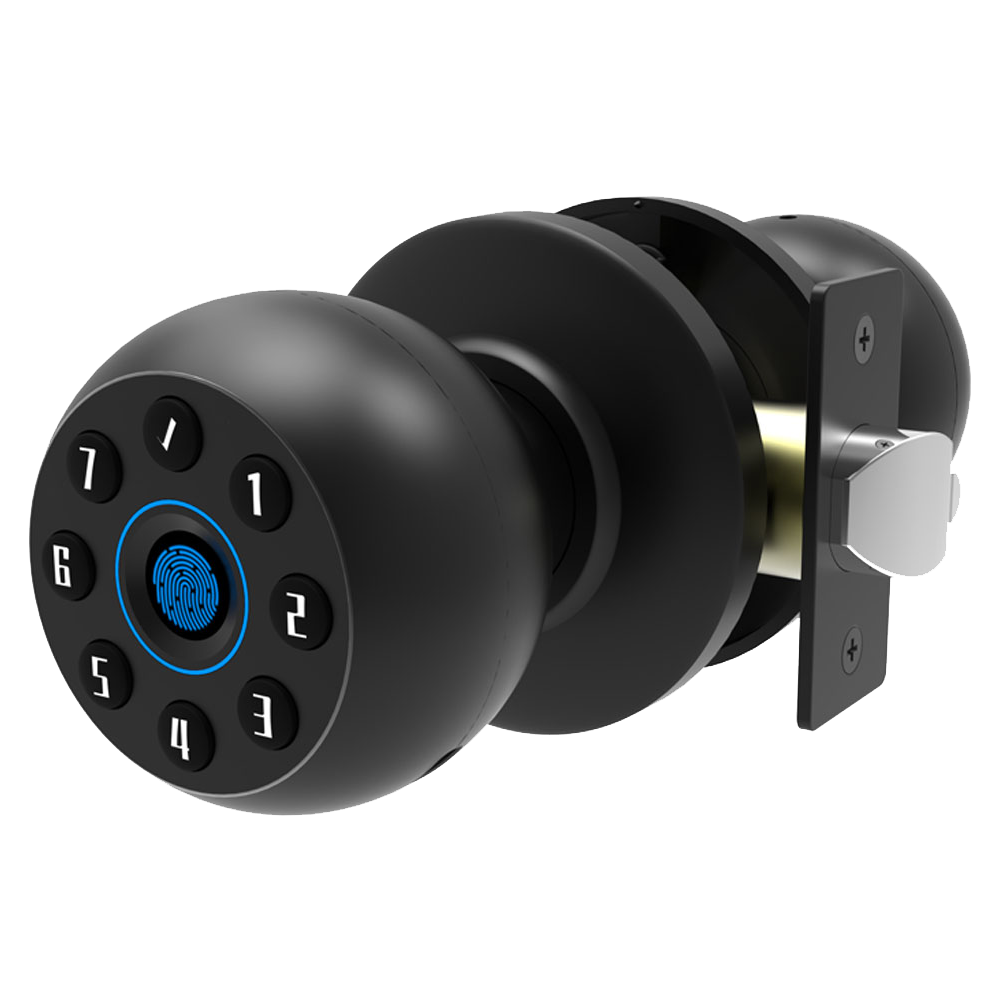
So, regular check-ins keep your smart door locks running smoothly and your tenants happy. First, watch your battery monitoring alerts (notifications that pop up when battery power gets low). Swap out AA batteries at the first sign of low juice to dodge surprise lockouts.
Each month, set aside a few minutes for these tasks:
- Inspect the keypad and fingerprint sensor (a reader that checks your unique fingertip pattern) for dirt or debris.
- Test emergency power backup options like a 9V battery port or micro-USB charging cable.
- Wipe down the smooth metal faceplate and check alignment. You’ll know it’s right when you hear that crisp, reassuring click.
Firmware update processes (how you install new software) are your safety net. Push updates through the mobile app or cloud portal. Schedule them every quarter or whenever the maker releases a patch. That way, you’re always running the latest security fixes.
Security compliance hinges on meeting key industry standards. Here’s a quick encryption standards comparison and certification checklist:
| Feature | Standard |
|---|---|
| Encryption | AES 128-bit |
| UL Certification | UL 294 (access control) |
| ADA Compliance | ADA compliant security devices |
And keep every lock on a secure, private Wi-Fi network. Always test those emergency power backups before renters move in, because even the best batteries die when you least expect it.
Cost Analysis and ROI of Smart Door Locks for Property Management
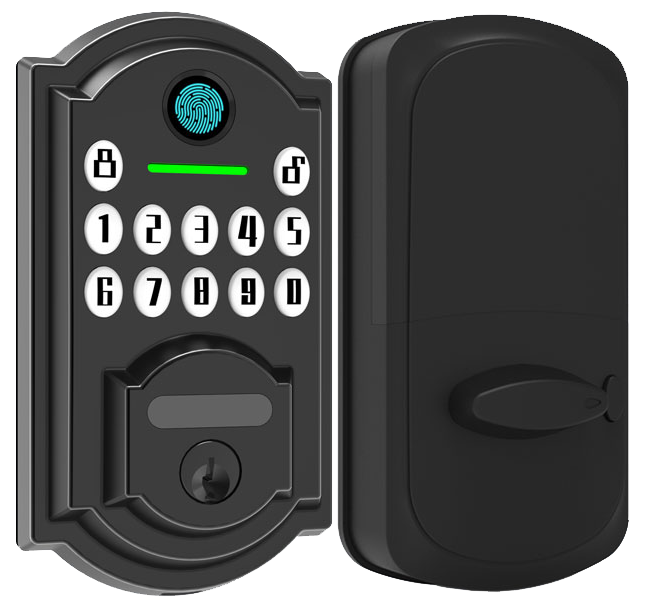
Smart door locks start around $200-250 each. By contrast, rekeying a traditional lock runs about $75-100 per lock and takes an hour of staff time. Swap codes instead of swapping cylinders and you cut rekeying costs by about 70%. And you still get a smooth metal faceplate, a soft LED glow, and that reassuring click when the door locks.
Hmm, maintenance savings add up fast.
- Fewer lock-out calls – each avoided service call saves about $50 in labor and travel.
- Self-guided tours – guests unlock with their phone, giving leasing agents back 2-4 hours each month.
- Remote firmware updates (software fixes sent over the air) – no more on-site visits just for security patches.
When you layer in electronic access controls, insurance premiums often drop. A property paying $1,200 a year could see a 5%-10% reduction, or about $60-120 saved per lock each year.
Tech-forward buildings attract millennial renters who expect seamless entry. Even shaving off 5 vacancy days at $100 a day adds up to $500 per unit every year. Combine that with rekeying and insurance savings, and you’re looking at a full ROI in 12-18 months.
So the numbers add up. You invest in hardware and installation. Then you get lower labor bills, fewer emergency calls, and better occupancy. Solid. Smart decision.
Starlight Smart Locks: Top Smart Door Lock Solutions for Property Managers
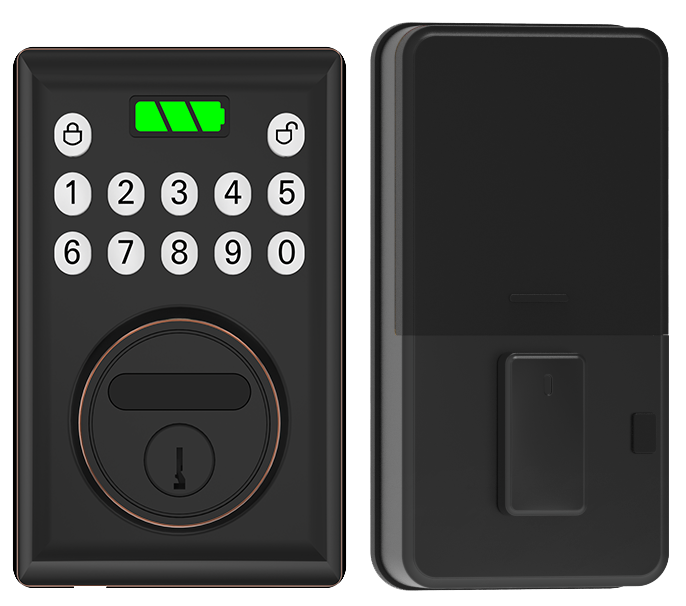
-
Overview: Each lock feels solid in your hand. You’ll hear a reassuring click as the smooth metal faceplate closes. It’s ANSI Grade 1 certified (the highest U.S. commercial and residential lock rating).
-
Protocols: Pick your radio, Z-Wave (for slick automation), Bluetooth (for quick mobile setup), or Wi-Fi (for remote control). Pairing is as easy as syncing headphones to your phone.
-
Maintenance: You’ll see a soft LED glow (a small light that pulses when the battery runs low). Need backup power? Just plug any micro-USB cable (like your phone charger) into the emergency port.
-
Cloud Management: Our open API hooks keep your property dashboard in sync. Auto-generate tenant move-in codes, instantly revoke guest access, or trigger custom alerts. Want to know a secret? This feature changes the game.
Final Words
In the action, we’ve covered how smart door locks boost security and convenience by ditching keys and adding automation, audit trails, and guest codes.
Then we dug into Z-Wave, Bluetooth, and Wi-Fi options, credential choices, easy DIY or pro installs, and cloud integration for smooth property workflows.
Next, we saw maintenance tips, cost savings, and ROI highlights that make a solid case for upgrading.
With Starlight Hardware’s tested solutions, you can lock in reliability and enjoy Smart Door Locks for Property Management every day.
FAQ
What are the best smart door locks for property management?
The best smart door locks for property management combine durability, easy installation, remote control, and audit trails. Schlage Encode, August Smart Lock Pro, and Starlight Hardware’s Z-Wave models top the list for reliability.
How do I use and troubleshoot Rently smart lock app?
The Rently smart lock app lets you create guest codes (temporary access PINs), view audit logs, and unlock doors remotely. If a Rently lock stops responding, restart the app, power cycle the lock, or reset it in settings.
What are the disadvantages of a smart door lock?
The smart door lock disadvantages include battery dependency (dead batteries can lock you out), potential wireless security vulnerabilities, and initial cost. Some models need a hub, adding to setup complexity and expense.
Can you put a smart lock on a rental property or condo?
You can install a smart lock on a rental property or a condo if local rules and landlord approvals allow. Retrofit models fit over existing deadbolts with basic tools, keeping maintenance minimal.
What is a Bluetooth smart lock?
A Bluetooth smart lock is a keyless deadbolt that pairs your smartphone within about six feet. It needs no hub (central control unit) and offers quick local access, though it lacks true remote control.
